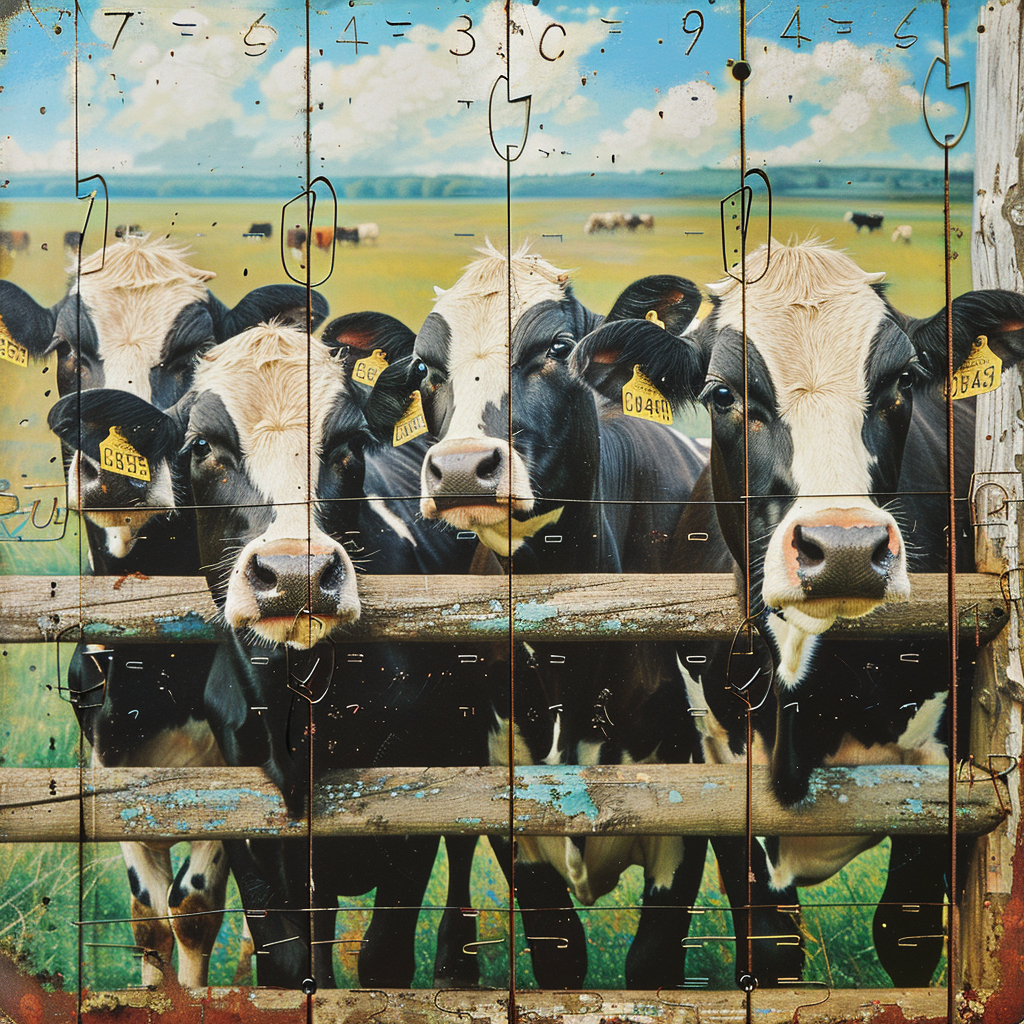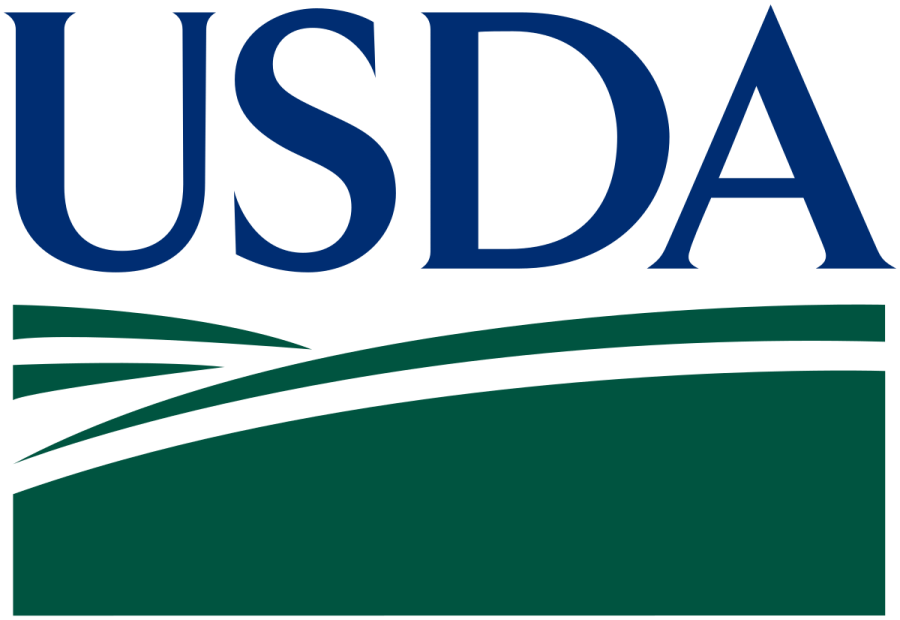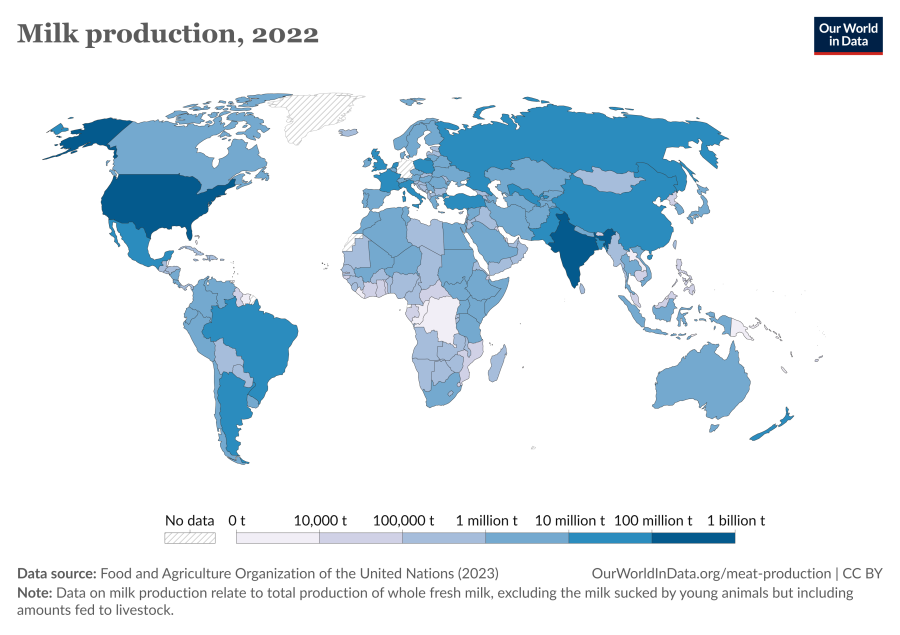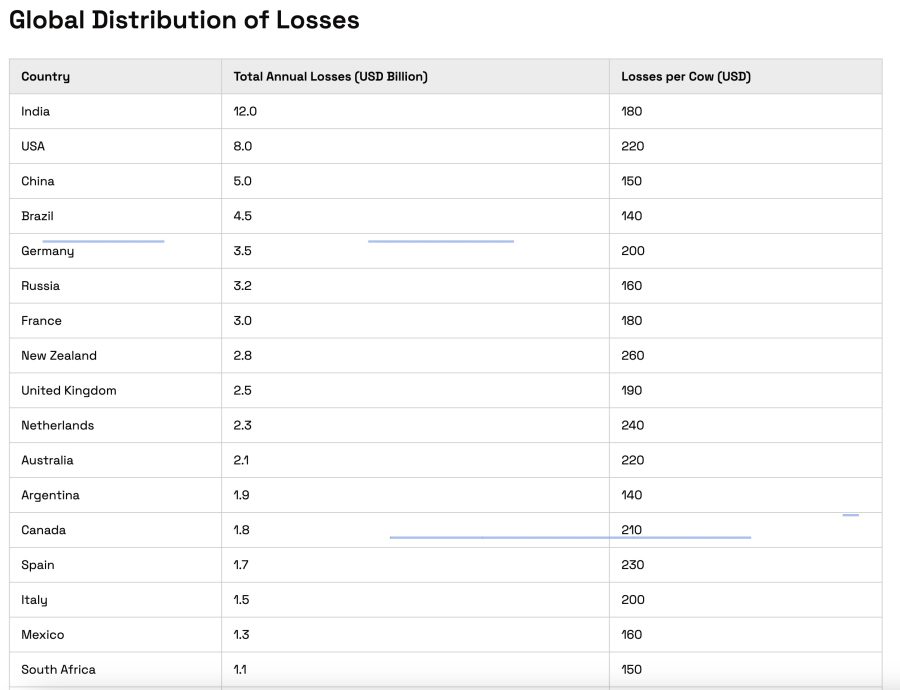Discover the December 2024 global genetic evaluations. Who’s leading the dairy revolution? Meet the top sires and their industry impact.
Picture a world where dairy farming is no longer bound by age-old traditions but is propelled forward by genetic insights. Genetic evaluations are not just reshaping the dairy industry but also connecting us on a global scale. The December 2024 global evaluations are a testament to this, showing how genetics refine farming practices and shape the future of agriculture. These evaluations, from the USA to Switzerland, enhance productivity and refine breeding, allowing dairy farmers worldwide to make informed, innovative decisions.
Genosource Captain: The Unrivaled Titan of GTPI
In the intricate world of genetic evaluations, Genosource Captain stands as a towering figure, proudly continuing his reign in the USA with an unwavering grip on the GTPI crown. Now boasting a GTPI of +3336, this formidable leader deftly adds over 1,800 daughters to his impressive American index, further solidifying his status. It’s a testament to his unrivaled genetic prowess, offering a staggering +2,542 kg milk alongside improvements in fat and protein percentages. His unswerving performance ensures his position at the apex isn’t quickly challenged.
However, the Captain’s dominance is not unchallenged. The industry is a dynamic, competitive arena, and new players are always emerging. SDG Cap Garza, a formidable newcomer, makes a striking debut at the second position with a GTPI of +3256, trailing the leader by a mere 80 points. Meanwhile, Plain-Knoll Renegad Trooper is a strong contender, securing the third spot with a commendable GTPI of +3196 and enlisting 712 daughters from 243 herds into his genetic index. This constant evolution keeps the industry engaging and exciting.
The PTAT rankings unveil another sphere of excellence amidst these powerhouses. Here, Redcarpet Story Arc prominently carves his name, reigning supreme with an impressive PTAT of +4.56. His ascent is closely followed by another rising star, Jimtown Nelson, and the renowned SHG Lego, each illustrating their genetic finesse with notable PTAT scores.
- USA – GTPI – >12 months & NAAB-code – 12/24
- USA – Net Merit – >12 months & NAAB-code – 12/24
- USA – GTPI – Dtr Proven – 12/24
- USA – PTAT Bulls = >12 Months – 12/24
- USA – Top *RC GTPI >12 months & NAAB-code 12/24
- USA – Top R&W GTPI >12 months & NAAB-code 12/24
- USA – Top R&W & *RC PTAT Bulls >12 Mths – 12/24
Canada’s Dynamic Shift: Sheepster’s Dynasty and Overhaul’s Ascendancy in Dairy Genetics
The latest update in Canadian genetic evaluations presents an intriguing snapshot of innovation and leadership within the dairy industry. Ocd Trooper Sheepster emerges as a pivotal influencer, with no less than 13 of his progeny among the Top 100 gLPI genomic sires. This significant presence underscores Sheepster’s remarkable genetic prowess and lasting impact on future generations. His contribution towards refining genetic traits continues to shape the industry landscape, ensuring competitive progress.
Taking the forefront, Stantons Overhaul P has cemented his standing as the top gLPI genomic sire, achieving a compelling +4001 gLPI, setting a benchmark for others to strive towards.
The Daughter Proven Conformation rankings unveil a fiercely contested arena, where Hyden Limited P and Black Silver Crushabull Stan share the coveted pinnacle, each with an impressive +16 Conformation rating. This level of excellence highlights their extraordinary conformation characteristics, making them desirable breeding choices for improving herd quality. Trailing closely are Vogue A2P2 PP, Blondin Energy, Duckett Crush Tatoo, and Blondin Legend, all exhibiting solid performances with a +15 Conformation rating. These rankings reflect individual achievements and encapsulate the rigorous competition that propels continuous improvement in dairy genetics.
- CANADA – GLPI – Genomics – Rel. in Canada – 12/24
- CANADA – Top LPI – Domestic – Dtr proven – 12/24
- CANADA – Top LPI – Mace – Dtr proven – 12/24
- CANADA – Conformation Genomic Bulls – 12/24
- CANADA – Conf. – Domestic – Dtr. Proven 12/24
Denovo Harmony’s Rise: A Testament to the UK’s Evolution in Dairy Breeding
In the transformative landscape of the UK dairy sector, the emergence of Denovo Harmony’s unparalleled leadership in young genomic bulls stands as a testament to the industry’s innovative breeding strategies. This remarkable achievement is not just a reflection of genetic prowess, but also an embodiment of strategic foresight in breeding choices that prioritize productivity and lineage improvement. It’s inspiring to see how the industry is constantly pushing the boundaries of what’s possible.
Delving deeper into the Type Merit rankings, Aot Hampshire’s dominance with a +3.10 TM underscores a pivotal shift toward enhancing physical traits essential for longevity and productivity. In a sector where every genetic advantage is crucial, Hampshire’s success accentuates the growing recognition of traits that might have appeared ancillary but now take center stage in breeding decisions.
This focus shift — from mere production metrics to a more holistic view incorporating type assessments — suggests that the UK dairy industry is evolving into a phase where the balance between yield and physical robustness is key. The insights drawn from such merit-based evaluations herald a forward-thinking approach, signaling that today’s strategic choices in breeding, which prioritize physical traits essential for longevity and productivity, are tomorrow’s productivity milestones.
- UK – PLI Young Genomic Bulls – 12/24
- UK – PLI Daughter Proven Bulls – 12/24
- UK – TYPE Merit Young Genomic Bulls – 12/24
- UK – TYPE Merit Daughter Proven – 12/24
Ecbert’s Dominance and Cookiecutter Hadley’s Challenge: A Tale of Two Titans in Dairy Genetics
The latest Italian genetic evaluations reaffirm Ecbert’s standing as the premier genomic sire, with an impressive gPFT score of +5146. This powerhouse, a Gladius son, remains unchallenged at the top, showcasing the strength and continuity of Italian genetic prowess. However, Ecbert shines on the local stage and in international competitions.
Amidst this global contest, Cookiecutter Hadley emerges as a formidable competitor from the illustrious Cookiecutter MOM Halo VG-88-USA DOM lineage. Leading the pack with a remarkable +5404 gPFT, Hadley demonstrates the robustness of foreign breeding programs and challenges Italian supremacy. As the industry looks for the sires to shape the next generation, these rankings reflect current achievements and set a high bar for future contenders.
- ITALY – Dtr proven PFT (Domestic) – 12/24
- ITALY – Genomic PFT (Domestic) – 12/24
- ITALY – Foreign Genomic PFT – 12/24
Recalibrating the German Genetic Battleground: The Ascendancy of AltaMuller and Pennywise
The German genetic landscape is undergoing noticeable changes, predominantly in the B&W RZG Interbull Genomic rankings. Centrally, AltaMuller and Pennywise have surged to the forefront, each boastfully achieving a robust +161 RZG. In contrast, Real Syn, a once preeminent force, finds itself in the third position, having dropped to +160 RZG—a testament to the ever-evolving arena of dairy genetics.
AltaMuller’s and Pennywise’s ascent signals a shift toward a new era of genetic excellence driven by precision breeding and advanced genomic insights. Their consistent performance underscores the effectiveness of genomic selection strategies, which breeders increasingly embrace to enhance milk production, fertility, and overall herd health.
Meanwhile, Real Syn’s decline raises questions about the lasting influence of genetic supremacy amid rapidly advancing genetic evaluation techniques. Although slight, this drop could signal more profound, underlying shifts in genetic dominance, possibly prompting a reevaluation of existing breeding protocols.
In this climate, the dairy industry must brace for further genetic recalibrations. As bulls like AltaMuller and Pennywise reshape the RZG Interbull Genomic rankings, Real Syn’s slip is a stark reminder of the fluidity inherent in the genetic evaluation landscape. These developments underline the dynamic nature of genomic advancements, encouraging breeders to remain vigilant and adaptable in their quest for genetic superiority.
- GERMANY – B&W – Interbull Genomics – 12/24
- GERMANY – B&W – Interbull Dtr Proven – 12/24
- GERMANY – B&W – Domestic Genomics – 12/24
- GERMANY – B&W – Dtr Proven – 12/24
- GERMANY – B&W – Domestic 99% R Bulls – 12/24
- GERMANY – R&W – Interbull Genomics – 12/24
- GERMANY – R&W – Interbull Dtr Proven – 12/24
- GERMANY – R&W – Domestic Genomics – 12/24
- GERMANY – R&W – Dtr Proven – 12/24
- GERMANY – R&W – Domestic 99% R Bulls – 12/24
Swiss Genetic Surge: Beautyman’s Benchmark and the Daughter-Proven Rivalry
The Swiss genetic evaluations reveal an electrifying surge in rankings, dominated by the influential TGD-Holstein Beautyman. With an outstanding +1651 ISET, Beautyman not only eclipses competitors but sets a new benchmark, accelerating the evolution of the Swiss breeding landscape. His prowess signals a shifting paradigm in optimizing genetic potential.
Meanwhile, the domestic daughter-proven index chauffeurs a robust rivalry, with Vogue Letsgo carving a significant niche as an Applicable son with an admirable +1495 ISET. It’s a heated contest, further punctuated by the rising wildcard, Wilder Hotspot P, whose notable +1411 ISET places him within striking distance. This intense race in the daughter-proven segment uncovers a dynamic interplay of genetics and strategy poised to reshape future breeding paradigms in Switzerland.
- SWITZERLAND – ISET – Genomic 12/24
- SWITZERLAND – ISET – Interbull Dtr proof – 12/24
- SWITZERLAND – ISET – Domestic dtr proven 12/24
The Dutch Cadence: Celebrated Titans and Newcomers Shape the Genetic Conquest
In the Dutch rankings, familiar faces once again make their presence felt. Genosource Captain stands unrivaled as the leading Black and White daughter-proven sire, boasting an exceptional +329 gNVI rating, bolstered by 38 daughters in his Dutch index. Following closely is Gigaball, seizing the second position with a +316 gNVI and supported by an impressive 203 daughters. Not far behind, Kax Gladius completes the top three with a solid +313 gNVI.
Bento emerges as the leader in the realm of genomic sires, claiming the #1 spot with a formidable +439 gNVI, reflecting a rise of 16 points. His performance is marked by significant figures such as +2322kgM and +1038 Lifetime. A new addition to the rankings, Soranjo, son of Soysauce, makes an impactful debut by securing the second position at +385 gNVI. Bringing up the third spot is Rockwell, son of Rover, with a commendable +380 gNVI.
- Netherlands – B&W – Genomic Bulls – 12/24
- Netherlands – B&W – Dtr proven bulls – 12/24
- Netherlands – B&W – Dtr proven INTERBULL – 12/24
- Netherlands – R&W – Genomic Bulls – 12/24
- Netherlands – R&W – Dtr proven bulls – 12/24
- Netherlands – R&W – Dtr proven INTERBULL – 12/24
The Bottom Line
The December 2024 genetic evaluations highlight a dynamic and competitive international landscape where leading sires from the USA, Canada, UK, Italy, Germany, and Switzerland showcase impressive advancements in dairy genetics. Genosource Captain sustains supremacy in the USA, while Canada’s genetic scene is characterized by Sheepster’s significant impact and Overhaul’s leadership. The UK sees Denovo Harmony’s rise, reflecting refined breeding efforts. At the same time, Italy was enthralled with Ecbert’s unmatched genomic prowess alongside international luminaries like Cookiecutter Hadley. Germany’s genetic stage is recalibrated with AltaMuller and Pennywise’s strategic ascents. Switzerland’s innovations are marked by Beautyman’s peak performance and fierce domestic competition.
These developments indicate national strengths and collectively underscore a global revolution in dairy farming. They prompt industry professionals to ponder the broader implications of these evaluations—how can they drive forward innovative solutions and sustainable practices in dairy farming? As these genetic achievements evolve, they promise new possibilities for livestock management, productivity, and profitability across the global stage. Dairy farmers and industry stakeholders are encouraged to embrace these changes, anticipating an exciting future of continuous improvement and breakthrough advancements in dairy genetics.
Key Takeaways:
- Genosource Captain maintains his dominant position in the USA with a leading GTPI and significant contributions from additional daughters.
- Canada’s genetic landscape sees Ocd Trooper Sheepster and Stantons Overhaul P making a significant mark in gLPI rankings, with a notable focus on genomic prowess.
- The UK’s Denovo Harmony leads the pack, reflecting the region’s evolution in breeding priorities and highlighting competitive genomic bulls.
- In Italy, Ecbert remains the foremost genomic sire, with close competition from Cookiecutter Hadley in the international genetic race.
- Germany experiences a recalibration in its genetic rankings, with AltaMuller and Pennywise rising to the forefront of B&W Interbull Genomic standings.
- Switzerland marks significant achievements with TGD-Holstein Beautyman atop the ISET rankings, indicating a competitive genetic atmosphere.
Summary:
The December 2024 genetic evaluations have ignited conversations worldwide, highlighting standout performances and intriguing shifts across the dairy farming community. Genosource Captain remains the dominant force in the USA, with SDG Cap Garza in close pursuit. Canada’s celebration centers on Ocd Trooper Sheepster’s significant influence and Stantons Overhaul P’s remarkable rise. In the UK, Denovo Harmony signals a new era of evolution in dairy breeding, while Italy observes Ecbert’s continued supremacy as Cookiecutter Hadley mounts a formidable challenge. Germany experiences recalibrations, with AltaMuller and Pennywise emerging as leaders, whereas Switzerland sees TGD-Holstein Beautyman setting a new benchmark. These dynamic developments underscore the role of competitive rankings, scientific innovations, and international collaborations in transforming the genetics powering dairy production globally.
 Join the Revolution!
Join the Revolution!
Bullvine Daily is your essential e-zine for staying ahead in the dairy industry. With over 30,000 subscribers, we bring you the week’s top news, helping you manage tasks efficiently. Stay informed about milk production, tech adoption, and more, so you can concentrate on your dairy operations.







 Join the Revolution!
Join the Revolution!















